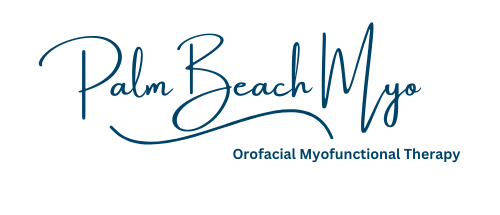The Perfect Pair: How Myofunctional Therapy and Craniosacral Therapy Work Together for Total Wellness
When it comes to holistic health, therapies often work best when they complement each other—supporting the body's natural ability to heal and function optimally. Myofunctional Therapy (MFT) and Craniosacral Therapy (CST) are two approaches that, while distinct, align in ways that can significantly enhance patient outcomes. Many families first discover craniosacral therapy for tension or sleep issues, and later learn how myofunctional therapy can address the root habits and muscle function that keep those problems coming back. By working together, practitioners of MFT and CST can help patients achieve better function, improved comfort, and long-term wellness.
What is Myofunctional Therapy?
MFT focuses on retraining the muscles of the face, tongue, and throat to improve oral posture, breathing, and swallowing function. It is commonly used to address issues such as:
Tongue-tie recovery
Chronic mouth breathing
TMJ disorders
Orthodontic relapse
Sleep-disordered breathing (including sleep apnea)
By guiding proper function of the orofacial muscles, MFT helps create stability within the oral and airway structures, forming a strong foundation for overall health.
What is Craniosacral Therapy?
CST is a gentle, hands-on technique that focuses on releasing tension in the craniosacral system—which includes the membranes and cerebrospinal fluid surrounding the brain and spinal cord. By applying light pressure to specific areas, CST helps promote nervous system regulation, reduce tension, and improve mobility within the cranial and spinal structures. It is often used to support patients dealing with:
Chronic pain and tension
Headaches and migraines
Stress and trauma-related tension
TMJ dysfunction
Postural imbalances
Why MFT and CST Work So Well Together
Although MFT and CST target different systems in the body, they share a common goal: restoring balance and function. Many patients experience improved outcomes when these therapies are used in collaboration. Here’s how they complement each other:
1. Supporting Jaw and Oral Alignment
MFT: Strengthens and balances the muscles of the tongue, jaw, and face, promoting proper oral posture and reducing strain on the TMJ.
CST: Helps release tension in the cranial bones, jaw, and surrounding tissues, allowing for better mobility and alignment.
Together, these therapies can help relieve TMJ discomfort, reduce muscle tightness, and improve bite stability.
2. Optimizing Airway Function and Breathing Patterns
MFT: Encourages nasal breathing and correct tongue posture, both of which are essential for airway stability and oxygen flow.
CST: Releases restrictions in the head, neck, and upper chest, helping the body maintain a clearer, more open airway.
For patients with sleep-disordered breathing, snoring, or chronic mouth breathing, this combination can provide long-term relief and improved sleep quality.
3. Improving Posture and Whole-Body Alignment
MFT: Helps correct oral habits that contribute to forward head posture and muscle imbalances in the neck and jaw.
CST: Works on a structural level to relieve tension in the spine and cranial system, promoting better posture and movement.
By addressing both muscular function and structural alignment, MFT and CST together help support whole-body balance and reduce strain on the head, neck, and shoulders.
4. Enhancing TMJ Dysfunction Treatment
MFT: Retrains chewing, swallowing, and speaking patterns to reduce overuse of the TMJ muscles.
CST: Releases deep-seated tension in the cranial and mandibular structures, allowing for smoother jaw movement.
For those dealing with TMJ pain, jaw clicking, or muscle tightness, combining MFT and CST can provide a comprehensive, non-invasive approach to relief.
5. Supporting Nervous System Regulation and Emotional Well-Being
MFT: Improves breathing and swallowing function, which directly impacts the autonomic nervous system and promotes relaxation.
CST: Works on a deeper level to calm the central nervous system, releasing stored tension and emotional stress.
For patients dealing with chronic tension, anxiety, or stress-related jaw clenching, this combination provides a holistic approach to relaxation and healing.
A Collaborative Approach to Patient Care
Myofunctional therapists and craniosacral therapists often collaborate to provide complementary care that supports long-term healing and function. Whether a patient is seeking help for jaw pain, breathing difficulties, postural issues, or nervous system imbalances, the synergy between MFT and CST can offer more effective and lasting results.
Interested in Learning More?
If you’re currently working with an MFT or CST provider, consider discussing how these therapies might complement your treatment. If you're a practitioner looking to collaborate, fostering interdisciplinary care can be a powerful way to support patients in achieving whole-body wellness.
At Palm Beach Myo, I specialize in myofunctional therapy, helping patients improve breathing, sleep, and overall function through personalized care. If you're ready to explore how MFT can support your wellness journey, reach out today, because when you optimize function, you can truly breathe, sleep, and live better.
📞 Contact Palm Beach Myo Today
🌐 Visit: www.PalmBeachMyo.com
📧 Email: palmbeachmyo@gmail.com
📍 Call: (561) 303-6004
Helping You Breathe, Sleep, & Live Better.
